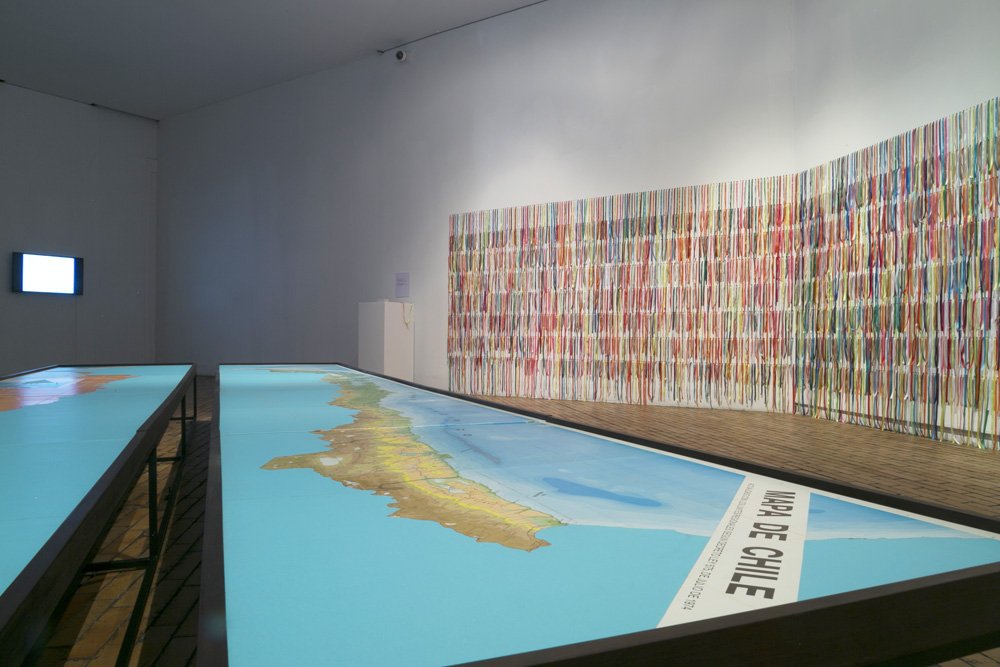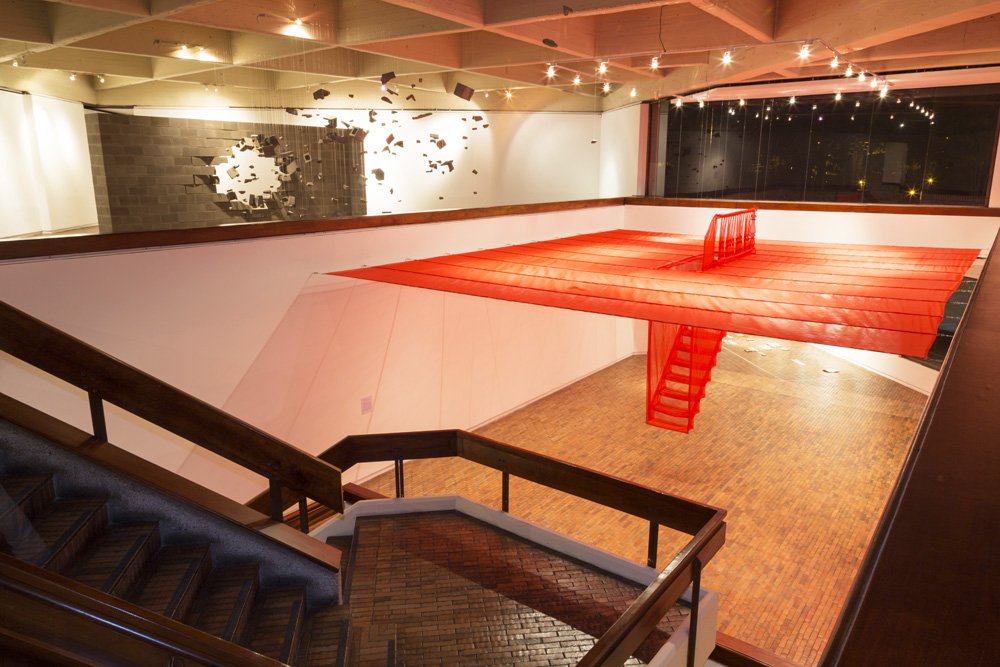Atopia: Migration, Heritage and Placelessness.
Place: Museo de Arte Moderno de Bogotá
Date: 01.03.2016-12.06.2016
Artists: Allora & Calzadilla, Jonathas de Andrade, Taysir Batniji, John Bock, Monica Bonvicini, Abraham Cruzvillegas, Mario García Torres, Carl Michael Von Hausswolf and Thomas Nordanstad, Mathilde Ter Heijne, Sanja Iveković, Brad Kahlhamer, Los Carpinteros, Rivane Neuenschwander, Walid Radd/The Atlas Group, Alex Rodríguez and Do Ho Suh.
Atopia. Migration, Heritage and Placelessness is an exhibition developed by Thyssen-Bornemisza Art Contemporary, Vienna, drawing from the foundation’s collection of contemporary art. It proposes the use of the concept of the “atopic” to challenge the orthodoxy of space and site and to freshly engage with a discoursive body of research that has long been determined by the notions of center/ off-center/ the local/ marginal/ the periphery–between what James Clifford calls localism and worldliness.
Atopia was initially developed in cooperation with Viviana Kuri Haddad for the Museo de Arte de Zapopan, Guadalajara, Mexico (May 14 - October 5, 2014); traveling to the Museo de Arte Moderno de Bogotá (March 2 - May 29, 2016), Atopia was adapted in collaboration with Andrea Wild, exhibition coordination, and Valentina Gutierrez Turbay as co-curator.

a word mainly used in medicine and philosophy, literally means placelessness, out of place, unclassifiable and of high originality. It is, in its traditional use, at the same time, a category of otherness, difference, expulsion and exclusion, as it is a reference to the ineffable, the pristine, and the absolute. It is in this double connotation, in which the term becomes a productive figure for thinking in addressing the various ways in which artists have dealt with ideas of place, geography, migration, heritage, translation, the crossing of national, social, and cultural borders. The atopic is here but not here, it is a position which denies location, perhaps an attitude or gesture that relates to an “original” cultural or social experience but at the same time diffuses it or remains at distance.
Atopia,
and addresses the ways in which a collection of 21st century art is constructed around the various experiences of difference, in which individuals and collectives participate in different cultural processes and realities. It therefore pivots around the specific systems and methods of exchange, translation, and its embedded critiques. A wide ranging production of visual and spatial works catalyze the reexamination of the agency of the artist in the production of such locational inquiries. It also implies strategies for re-claiming certain histories and place-specificities by way of reasserting territorial representations. The way “localism” is understood in this particular context is not as a reaffirmation of common simplifications but is instead based on productive inquiries and internalization of paradoxes and transitions, which evade categorizations or nostalgic impulses. It also shows how shifting political and economic realities have created new tales of places, and how their histories have sparked the impulse to document the rapid processes of transformation set into motion by new “continental shifts”.



